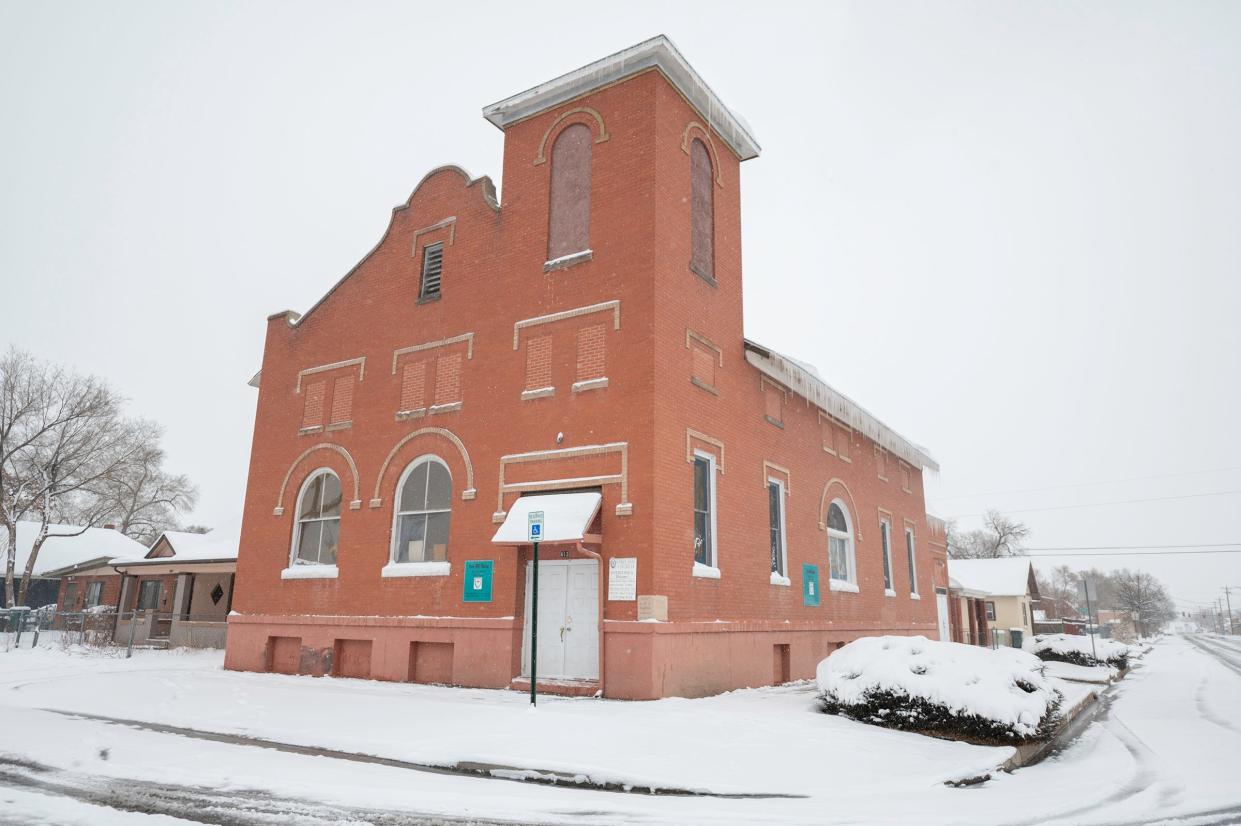Pueblo's First African Methodist Episcopal Church designated historic landmark

A safe haven for African American travelers to Pueblo during a time of widespread segregation and a house of worship for Black steelworkers living in Bessemer is now an official landmark.
First African Methodist Episcopal (AME) Church, previously known as St. Paul AME Church, was designated a landmark in the Pueblo Register of Historic Places by Pueblo City Council on Monday, Feb. 13.
Located near the corner of Pine Street and West Mesa Avenue, the church was built in 1915 with a parsonage built even earlier in 1909.
Broadband Access in Pueblo:Adelante Connect project to expand broadband access in Pueblo with $3 million grant
The Pueblo Historic Landmark Commission considers applicants eligible for landmark designation if they meet criteria pertaining to historic, aesthetic or geographic interest. A city background paper cites the church's connection to the Civil Rights Movement, function as a community center for Black Americans and other connections to history as reasons for the church's designation.
As a local landmark, First AME Church is eligible for up to $200,000 in grants from History Colorado, Pueblo planner Wade Broadhead said. The church also has applied to be listed on the National Register of Historic Places.
Worshippers like Ann Batey remain part of the First AME’s active congregation. Now a trustee, Batey has been a member of the church since she was 12 years old, but her earliest memories include walking up and down the aisle to attend Sunday school at St. Paul AME.
Her great-grandfather, John Moore, was one of the six founders of what would become St. Paul AME in 1889. The early congregation worshipped at the Colorado Fuel & Iron Company Store on the corner of Abriendo and Northern avenues.
Rev. John Adams pastored St. Paul AME when the building on Pine Street and West Mesa Avenue was built in 1915. Five years prior, Adams appeared in front of the U.S. Supreme Court as a defense attorney in Franklin v. South Carolina. He was only the second Black lawyer to argue a case in front of the Supreme Court. Adams later served in the Nebraska Legislature, where he championed Civil Rights causes until his death in 1962.
St. Paul AME was listed in "The Negro Motorist Green Book,” an annually published guidebook featuring safe havens for Black travelers in the United States during Jim Crow. The green book was published from 1936 to 1966. St. Paul AME also was in the rotation of meeting places for the National Association for the Advancement of Colored People's local chapter.
"Of course we were advocates of the Civil Rights Movement because it supports the teachings of Christ and we're worshippers of Christ," Batey said. "We're Christians."
More on Pueblo landmarks:Pueblo motel once listed in travelers' Green Book recognized for historical significance
Batey's parents, Theodore and Martha Jones, met at an NAACP meeting. Theodore, a Baptist minister, died of cancer about three years after his marriage to Martha. Martha had a bachelor's degree in foreign languages, but worked a job at CF&I to support her two children.
Several members of St. Paul AME worked at CF&I and lived in the Bessemer neighborhood. St. John, another AME church in Pueblo, was located on the north side on Elizabeth and Eighth Street. It was established in 1875 — just five years after Pueblo's incorporation as a town.
In 1960, St. John moved to the south side on Mesa and Cateret avenues before combining with St. Paul AME in 1976.
Pueblo Chieftain reporter James Bartolo can be reached by email at JBartolo@gannett.com.
This article originally appeared on The Pueblo Chieftain: Pueblo church added to local register of historic landmarks

